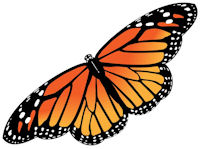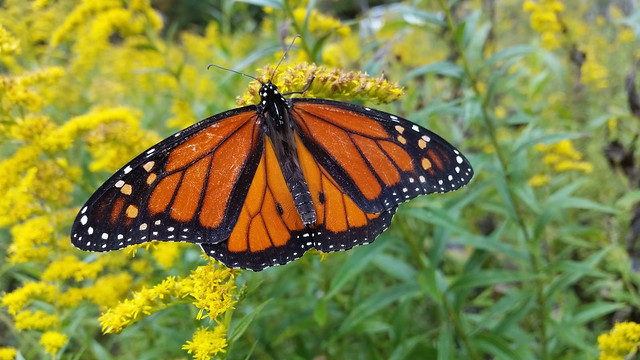
 Department of Conservation and Recreation
Department of Conservation and Recreation
Conserve. Protect. Enjoy.
 Department of Conservation and Recreation
Department of Conservation and Recreation
 In 2022, the monarch butterfly was ranked as Endangered on the IUCN's Red List of Threatened Species, as populations, along with other beneficial pollinators, continue to dramatically decline because of habitat loss and a myriad of other factors. Monarchs require much milkweed, in particular, to survive.
In 2022, the monarch butterfly was ranked as Endangered on the IUCN's Red List of Threatened Species, as populations, along with other beneficial pollinators, continue to dramatically decline because of habitat loss and a myriad of other factors. Monarchs require much milkweed, in particular, to survive.
More native milkweed and other plants needed by monarchs must be established. These beautiful insects require plants during all stages of their life cycle. Monarchs lay eggs on milkweed, which is what the larvae exclusively feed on. Adults feed on nectar from large, fragrant flowers. The sunflower family of plants, known as the Asteraceae, is the adult monarch’s favorite source, but they are drawn to other yellow, pink, orange and purple nectar-producing flowers, too.
Below is a partial list of monarch-friendly plants native to Virginia thrive and, once established, are drought and deer resistant. Also be sure you buy insecticide-free plants.
As habitat for pollinators has declined in recent years, so have populations of the insects humans depend on. More plants with nectar producing flowers are needed. In late winter and early spring, bushes and trees, such as alders, willows, hollies and red maples, that thrive in wet areas are vital for nectar and pollen. Columbine is among the first perennials to bloom, providing nectar to hummingbirds. In April and May, the main nectar sources are black locust, tulip poplar, blackberry, clover, vetch and wildflowers. Sourwood trees, clover, blackberry and wildflowers provide nourishment in late spring and summer. In late summer and fall, sumac, clover, asters and goldenrod are great providers, and gardeners can plant sunflowers and buckwheat to provide food in the fall.
Find native plants that provide pollinator-friendly habitat, and visit the Virginia Native Plant Society website to find a nearby nursery that sells plants that are native to Virginia.
Enjoy this slideshow featuring people working to created special places for monarchs and other beneficial pollinators.


